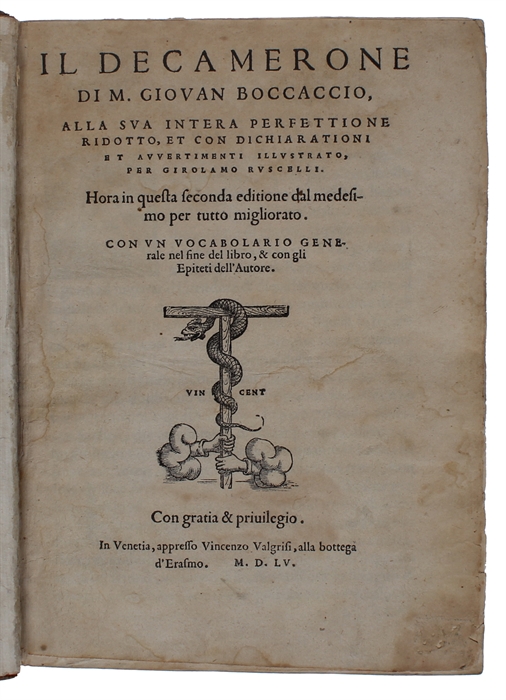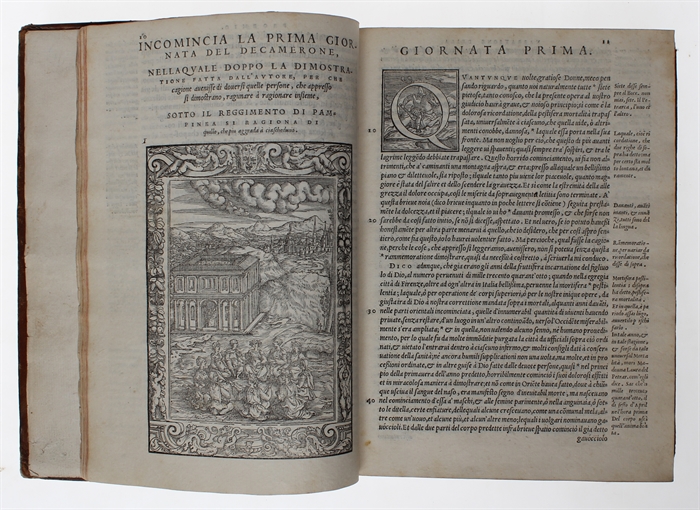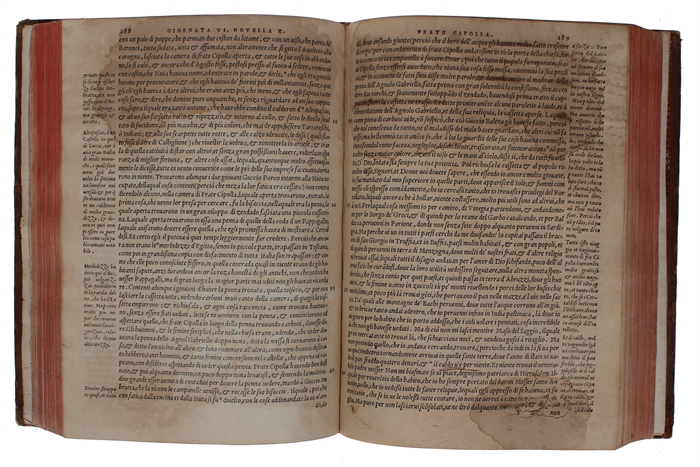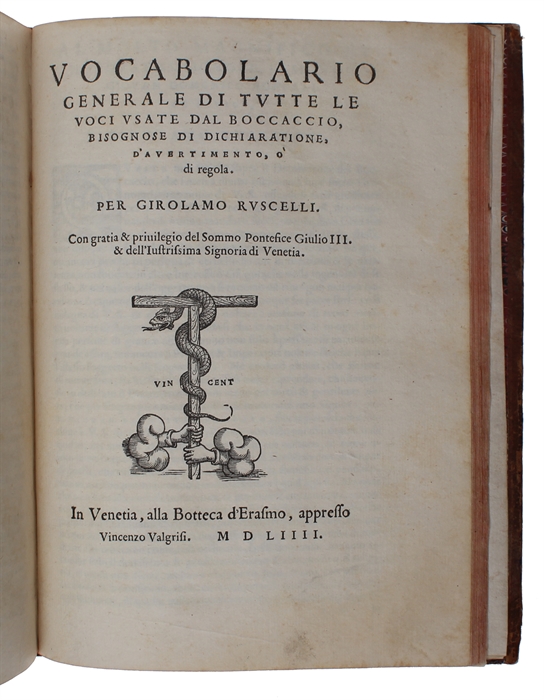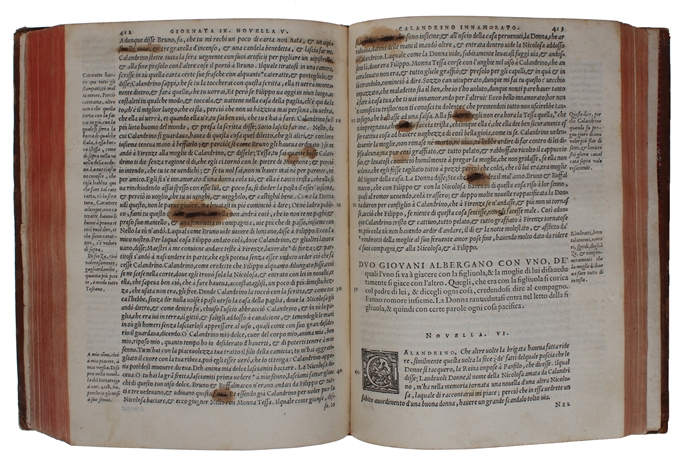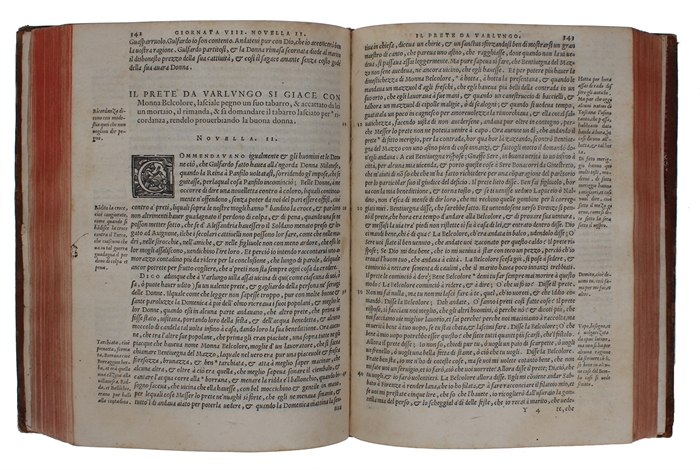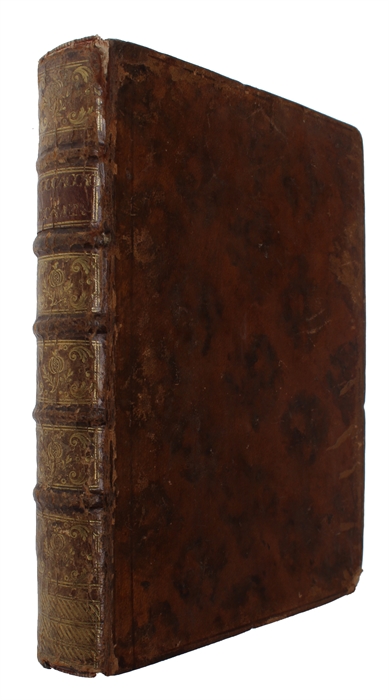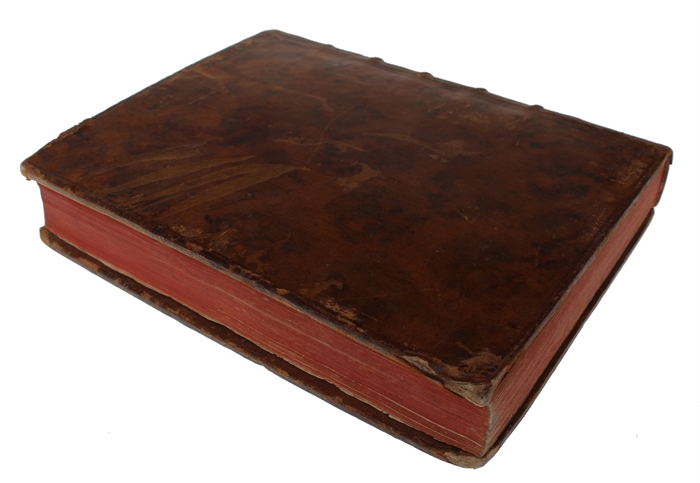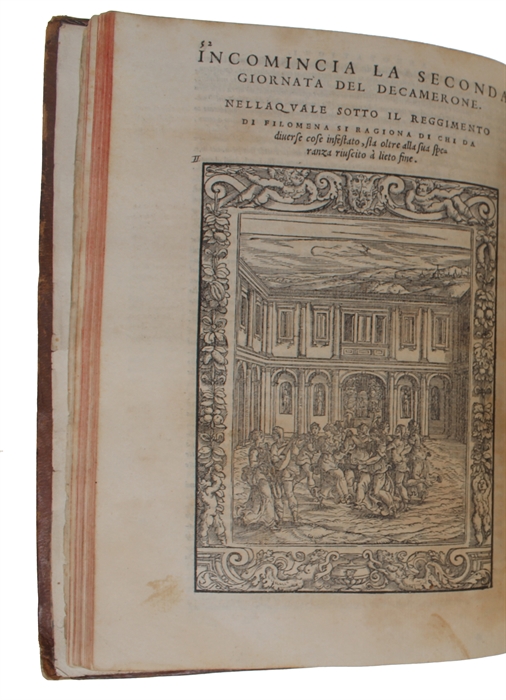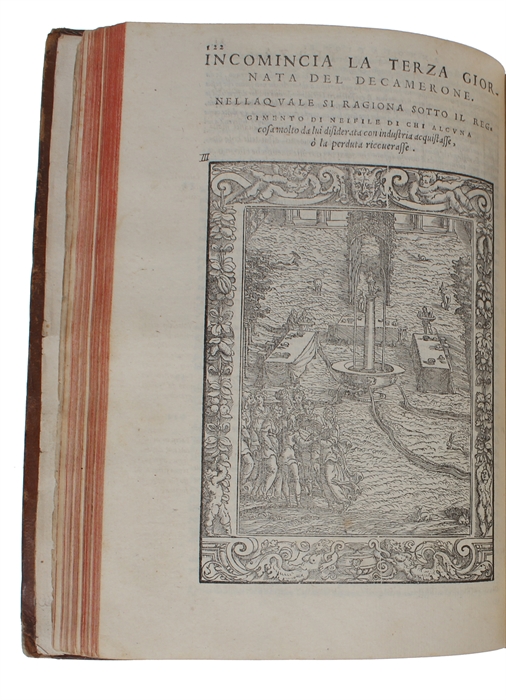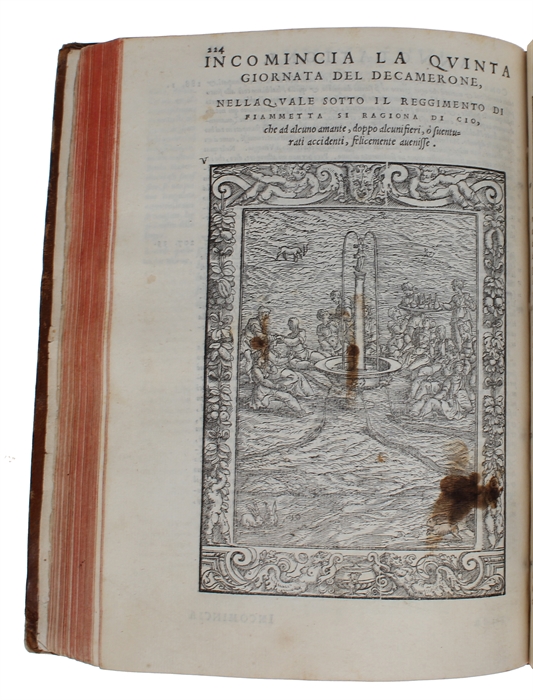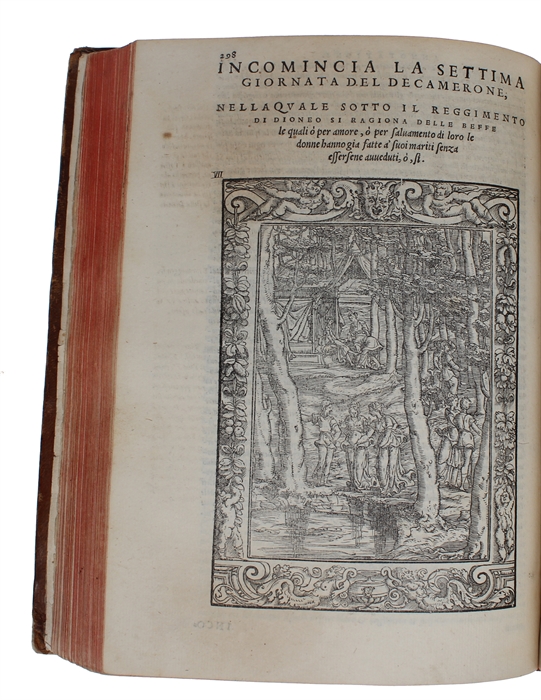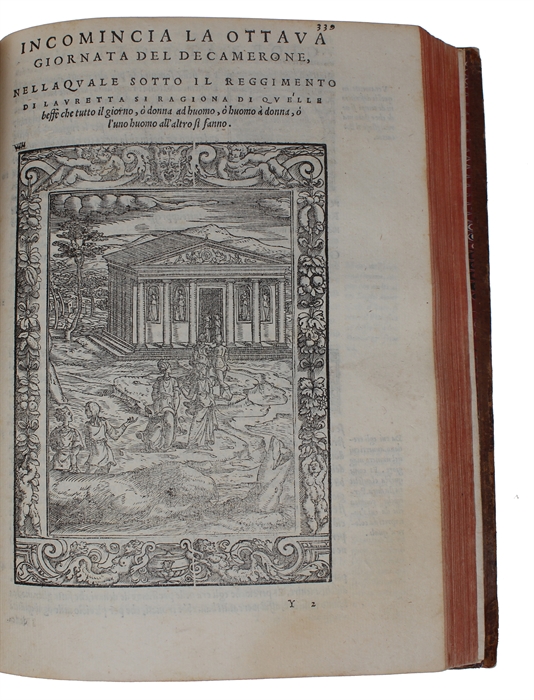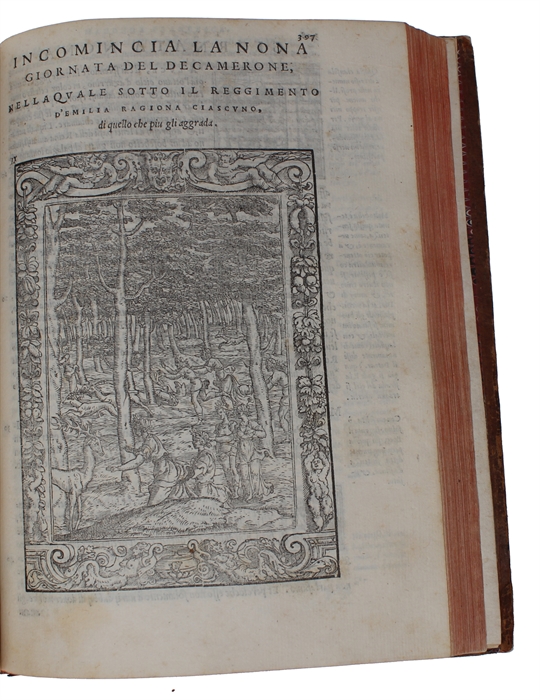THE BEAUTIFUL VALGRISI-EDITION OF 'THE DECAMERON'
BOCCACCIO, GIOVANNI.
Il Decamerone. alla sua intera perfettione ridotto, et con dichiarationi et auuertimenti illustrato, per Girolamo Ruscelli.
Venice, Vincenzo Valgrisi, 1555.
8vo (209 x 146 mm). In a bit later full calf binding with five raised bands. Spine with gilt lettering and ornamentation. Extremities with wear. Boards with scratches and capitals and hinges with minor loss of leather. Printer's device to title-page. Full page woodcut illustration at beginning of each "Giornata" (included in the pagination). Title-page with light soiling and a few holes to outer lower corner, far from affecting text. Pp. 277-296 with a rather heavy dampstain. Pp. 411-416 with a few words crossed out in text with offsetting from ink. P. 289 with small hole in outer lower corner, slightly affecting text, otherwise internally fine. [Blank], (10), 487, (82), [2 Blanks] pp.
Second Valgrisi-edition of Ruscelli's famous translation of Boccaccio’s The Decameron – here in the rare variant with 1555 printed on the title-page but 1554 on the separate title-page for the supplemented ‘Vocabolario generale di tutte le voci usate dal Boccaccio’. The first Valgrisi-edition was printed in 1552 and was reissued in 1554,1555 and 1557. It is widely considered one of the finest 16th century editions of Boccaccio’s work. It was intended to compete with the popular Giolito-editions, hence the stunning full-page illustrations preceding each of the ten days and the fine architectural borders. Girolamo Ruscelli, Italian Mathematician and Cartographer active in Venice during the early 16th century and especially famous for his present translation of The Decameron, had his books printed by Valgrisi. Lodovico Dolce had his translations printed by Giolito and was a fierce competitor to Ruscelli. The controversy between Ruscelli and Dolce arose from a wish on both parts to be considered the better translator of the classics and the best commentator. Their controversy was also reflected in the fact that the two scholars published their works with two rival Venetian printers: Brunet I, 1001 ("Il y a des exemplaires de l’édition de 1554, dont le frontispiece porte 1555").
“Ruscelli even ends his address to the reader with a disparaging reference to the Giolito editions. In illustration as in text, this edition had to compete with those of Giolito. Valgrisi’s artist took the theme of the Giolito illustrations – the ten scenes of the company at a villa – and almost doubled the height of the blocks to include more architectural details and views” (Mortimer 73)
Adams B-2154
Mortimer 73 (The first 1552-edition).
Grässe, vol. I, 450. (The first 1552-edition).
Order-nr.: 60223

